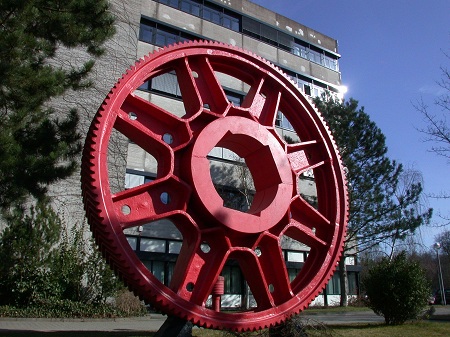Cellular machining offers significant benefits over high-end, special purpose machines: TU Darmstadt
A recent report from the Technische Universität (TU) Darmstadt in Germany demonstrates that the use of several, modestly priced CNC machine tools arranged in a cellular configuration can offer significant benefits over the use of more expensive special-purpose machines configured for ‘done-in-one’ operations. The cell-configuration studied at the university features two Haas Super Mini Mill 2 CNC machining centres and a Haas SL-10 CNC lathe.

The TU Darmstadt report, entitled ‘Cellular Manufacturing to enable Lean Machining’, was prepared by Stefan Seifermann, Jörg Böllhoff, Eberhard Abele and Joachim Metternich at the university’s Institute of Production Management, Technology and Machine Tools (PTW). Dr. Sven Bechtloff, who has since left the university, was also a key member of the study team.
Haas Automation has long-since argued that customers who invest in multiple, affordable CNC machine tools instead of one or two high-end, special purpose machines benefit from greater flexibility, lower investment and running costs and, ultimately, lower cost-per-part. Now, the company’s claim is supported by a recent, independent study on lean machining at the Technische Universität (TU) Darmstadt in Germany.
Research shows cellular machining utilising general-purpose CNC machine tools offers significant advantages over high-end, special purpose machines, with no loss of part accuracy or quality.
The idea for the research was based on a perceived absence of the principles of lean manufacturing applied in widespread machining operations in manufacturing companies of all sizes. Although deployed widely in assembly and process engineering environments (typically in the volume automobile manufacturing sector), the principles of flow as a central element of lean manufacturing have not often been transferred successfully to machining operations, and are rarely to be found at all in Europe.

In essence, cellular manufacturing is the grouping of heterogeneous equipment (in this case, CNC machine tools) to manufacture a family or group of similar parts. Typically, the concept involves the arrangement of machines in a U-shape to aid flow and balance work-in-progress with ‘takt’ time (the average unit production time needed to meet customer demand).
To demonstrate the potential advantages, a cellular reference production line has been established at the PTW’s Process Learning Factory (CiP). The ‘done-in-one’ line features two, high-specification machine tools: a four-axis CNC horizontal machining centre with tombstone fixture, and a CNC multi-axis automatic turning centre. The competing line, a machining cell, features two Haas Super Mini Mill 2 three-axis machining centres and a Haas SL-10 two-axis CNC lathe, as well as two, general purpose CNC machining centres and a CNC lathe supplied by another machine tool manufacturer. The report notes that the investment for the two machines in the ‘done-in-one’ line totaled €780,000, while that for the six CNC machine tools in the cell configuration was just €340,000.
An economic comparison between the two machining line configurations (based on 2000 parts per week, and one worker on each line) drew startling results. The ‘done-in-one’ line required 15 shifts to complete the 2000 parts. The lead-time was 35 minutes, while the unit cost of each part (without material) was calculated at €3.95. Using a cellular machining configuration, however, it took just 12.6 shifts to finish the 2000 components to an identical specification, lead-time was reduced to 10 minutes, and unit cost to just €2.55.

As an alternative scenario, if two workers are deployed in the machining cell the unit price climbs slightly to €3.10 as a result of the additional labour cost (but still far cheaper than the €3.95 unit cost of the ‘done-in-one’ line), 12.6 shifts are reduced to 9.8, and lead-time is cut from 10 minutes to just 7.
Using a capacity comparison based on 15 shifts, the ‘done-in-one’ line will complete 2000 parts; the cell with one worker will finish 2377 components (a 19% increase); and the cell with two workers will complete 3064 parts (a 29% increase).
In all cases, the study ensured part accuracy and quality standards were maintained and that the less expensive, general purpose machines were able to produce to a similarly high standard as the special-purpose machines.
Future costs could also be taken into consideration when comparing the different approaches. In the case that the production line needs to be expanded, introducing a new machine to the cell will be considerably cheaper than introducing a machine to the ‘done-in-one’ line due to the large disparity in their individual purchase prices.


